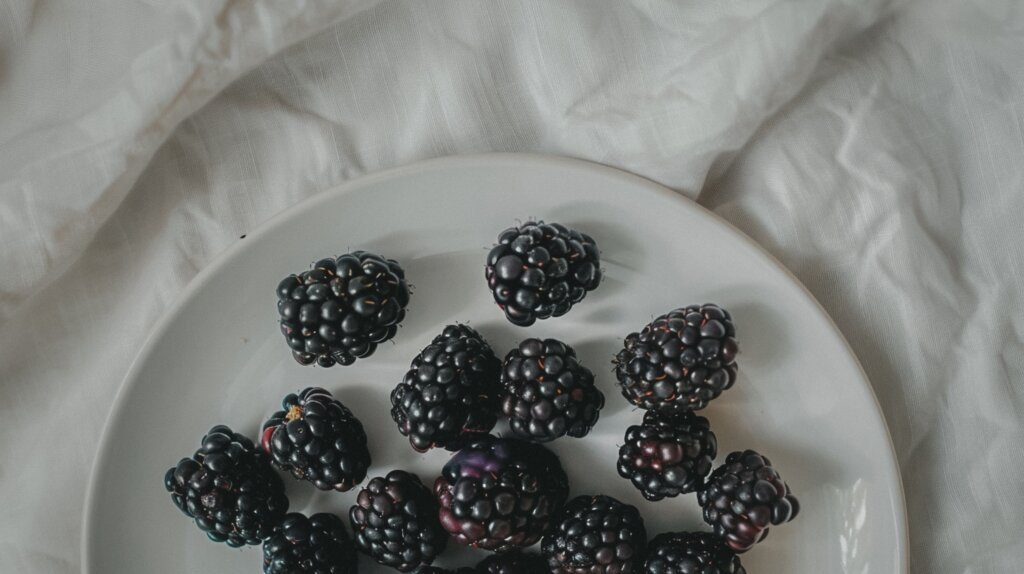Hydrating foods nourish your skin from within, creating a natural glow that no expensive cream can replicate.
When you’re seeking healthier, more vibrant skin, what you put on your plate matters just as much as what you put on your face. Your skin, the body’s largest organ, requires consistent hydration from both internal and external sources to maintain its protective barrier and natural glow. While you might be diligent about applying moisturizer and drinking water, you’ll find that certain foods can greatly boost your skin’s hydration levels from within. Understanding which foods pack the most powerful hydrating punch—and why they work—can transform your approach to skin health and help you achieve that coveted dewy complexion naturally.

Why Your Skin Needs Hydration
Your skin’s hydration level directly affects its barrier function, with water-filled cells acting as the foundation for healthy, resilient skin tissue.
When you’re dehydrated, your skin can show telltale signs like increased fine lines, dullness, and an uneven texture that many people mistakenly attribute to aging or poor skincare products.
While you might think drinking eight glasses of water daily is enough for skin hydration, research shows that a combination of internal hydration, topical moisturizers, and water-rich foods creates the most effective strategy for maintaining ideal skin moisture levels.
Quick science of skin hydration
The skin constantly battles environmental stressors while working to maintain its protective barrier function. Your skin’s hydration levels directly impact its ability to repair, regenerate, and defend against external threats. When your epidermal function is ideal, it effectively regulates water absorption and maintains cellular health through a complex process of moisture retention.
| Process | Function | Impact |
|---|---|---|
| Natural Moisturizing Factor (NMF) | Attracts and binds water | Maintains skin moisture balance |
| Lipid Barrier | Prevents water loss | Protects against dehydration |
| Aquaporins | Facilitates water transport | Enhances cellular hydration |
Your skin’s outer layer, the stratum corneum, acts like a sophisticated moisture-management system. It contains specialized proteins and lipids that work together to maintain ideal hydration levels. When you’re properly hydrated, these components function efficiently, creating a strong moisture barrier that keeps water in and harmful elements out. The process relies on both internal hydration through water consumption and external factors like humidity and skincare. Understanding this science helps you make informed choices about maintaining your skin’s moisture balance through diet, lifestyle, and targeted skincare approaches.
Signs of dehydrated skin
Looking out for signs of dehydrated skin helps you distinguish between temporary dryness and chronic dehydration. When your skin lacks proper moisture retention, it can display several telltale indicators that shouldn’t be ignored.
You’ll notice increased sensitivity, tightness, and a dull, lackluster appearance, particularly after cleansing.
One of the most reliable tests for dehydrated skin involves gently pinching your cheek – if the skin doesn’t immediately bounce back, you’re likely experiencing decreased skin elasticity due to insufficient hydration.
Dark under-eye circles may appear more pronounced, and fine lines become more visible as your skin struggles to maintain its natural moisture barrier.
Environmental factors like low humidity, excessive sun exposure, and harsh winds can worsen these symptoms, making your dry skin feel rough and flaky.
If you’re noticing itchiness, uneven texture, or that your skincare routine isn’t providing lasting relief, your skin is likely dehydrated.
Watch for increased oil production too – it’s your skin’s way of compensating for lack of water content.
These signs often appear gradually, but addressing them promptly helps prevent long-term damage to your skin’s protective barrier.
Common misconceptions
While recognizing signs of dehydration is important, many people hold misleading beliefs about skin hydration that can sabotage their skincare efforts.
Let’s tackle some persistent hydration myths that might be affecting your skincare routine and dietary choices.
- You don’t need to focus on hydrating foods if you drink enough water – Actually, the nutrients in hydrating foods work synergistically with water to maintain ideal skin hydration.
- Oily skin doesn’t need hydration – This common belief is false; even oily skin requires proper hydration to maintain its barrier function.
- Drinking more water instantly fixes dehydrated skin – Your skin needs time to repair and rebuild its moisture barrier, which requires both internal and external hydration.
- All moisturizing foods are equally hydrating – Some foods provide better skin hydration benefits due to their specific nutrient profiles and water content.
When it comes to skin hydration, myth busting is essential for developing an effective skincare strategy.
Common beliefs about food misconceptions can lead you to overlook valuable sources of skin-supporting nutrients.
Understanding the science behind skin hydration helps you make informed choices about both your diet and skincare routine, leading to better results.
Top Hydrating Foods for Radiant Skin
Your skin’s radiance depends heavily on a strategic combination of nutrient-rich foods that support hydration from the inside out.
Water-rich choices like cucumbers, watermelon, and leafy greens work alongside healthy fats from avocados and nuts to strengthen your skin’s moisture barrier, while antioxidant-packed berries help protect against environmental damage.
You’ll also want to incorporate collagen-supporting foods like citrus fruits and bone broth, which help maintain your skin’s structure and elasticity.
Water-rich fruits and vegetables
When it comes to nourishing your skin from within, water-rich fruits and vegetables are nature’s hydration powerhouses. These nutrient-dense foods don’t just provide water content; they’re packed with vitamins, minerals, and antioxidants that support skin health at a cellular level.
You’ll find that incorporating these hydrating foods into your daily diet can greatly improve your skin’s appearance and elasticity. Cucumber slices, containing 96% water, deliver silica for collagen production, while watermelon wedges offer lycopene that protects against sun damage. Leafy greens provide essential vitamins A and C, promoting skin repair and regeneration.
Here are the top water-rich foods you should include in your diet:
- Citrus fruits: Rich in vitamin C and bioflavonoids that strengthen capillaries and support collagen synthesis
- Bell peppers: Packed with antioxidants and over 90% water content to fight free radicals
- Cucumber: Contains anti-inflammatory compounds and the highest water content of any solid food
- Watermelon: Provides hydration and skin-protecting lycopene while being low in calories
These foods work synergistically to maintain your skin’s moisture barrier and promote a healthy, radiant complexion.
Healthy fats for skin barrier
Beyond hydrating produce, healthy fats play a powerful role in maintaining skin moisture from the inside out. Your skin’s lipid barrier depends on essential fatty acids to lock in hydration and protect against environmental damage. When you consume foods rich in healthy fats, you’re strengthening this natural defense system while reducing skin inflammation.
To boost your skin’s moisture retention, incorporate foods high in omega-3 benefits like wild-caught salmon, mackerel, and sardines into your weekly meal plan. Plant-based sources of nourishing oils, such as avocados, walnuts, and chia seeds, help maintain your skin’s structural integrity and promote a dewy complexion.
You’ll also find beneficial fats in extra virgin olive oil, which contains antioxidants that combat skin-damaging free radicals.
If you’re dealing with dry, flaky skin, don’t skip these healthy fats. They’re essential for maintaining cell membrane flexibility and supporting your skin’s natural repair processes. Research shows that a diet lacking in essential fatty acids can lead to compromised barrier function and increased moisture loss.
Aim to include at least one source of skin-supporting healthy fats in each meal to maintain ideal skin hydration.
Antioxidant-rich choices
Powerful antioxidants in colorful fruits and vegetables work synergistically with hydration to protect and nourish your skin cells. These compounds fight free radicals that can damage your skin’s structure while supporting natural skin rejuvenation processes.
When you combine antioxidant-rich foods with proper hydration, you’ll enhance nutrient absorption and promote inflammation reduction throughout your body.
To maximize antioxidant benefits for your skin, incorporate these vibrant foods into your daily diet:
- Dark berries (blueberries, blackberries, acai) contain anthocyanins that strengthen collagen production and protect against UV damage
- Orange and red produce (sweet potatoes, carrots, tomatoes) deliver beta-carotene and lycopene for natural skin protection
- Dark leafy greens (spinach, kale, Swiss chard) provide vitamin C and E that combat oxidative stress
- Green tea and pomegranate juice offer polyphenols that reduce skin inflammation and support cellular repair
The key to revealing these benefits lies in consistency. You’ll notice improved skin texture and resilience when you regularly consume these antioxidant powerhouses alongside adequate water intake.
Remember that your skin’s health reflects your internal nutrition, so prioritize these protective compounds in your daily meals.
Collagen-supporting foods
You’ll find that collagen synthesis naturally declines with age, but specific dietary sources can help maintain your skin’s elasticity and youthful appearance. The key lies in consuming foods that support your body’s natural collagen production process.
Vitamin C-rich foods like citrus fruits, bell peppers, and strawberries are essential for collagen formation. Your body can’t produce collagen without adequate vitamin C, making these foods vital for skin health.
Protein-rich options such as eggs, fish, and lean meats provide the essential amino acids necessary for collagen synthesis.
For plant-based options, focus on foods containing zinc and copper, such as pumpkin seeds, chickpeas, and lentils. These minerals act as cofactors in collagen production.
Bone broth serves as a direct source of collagen peptides, while foods rich in glycine and proline – like soybeans and cabbage – support your body’s natural collagen-building process.
To counter aging effects on collagen production, incorporate sulfur-rich foods like garlic, onions, and cruciferous vegetables into your diet. These ingredients provide the building blocks your body needs to maintain skin structure and prevent premature collagen breakdown.
Simple Ways to Include These Foods Daily
Adding hydrating foods to your daily routine doesn’t require complex meal planning or extensive preparation.
You can start your morning with a water-rich smoothie bowl topped with citrus fruits and cucumber slices, pack watermelon and strawberry combinations for quick office snacks, or incorporate water-rich lettuce wraps into your lunch rotation.
For ideal hydration benefits, pair moisture-rich foods like tomatoes and bell peppers with healthy fats such as avocados or olive oil, which help your body better absorb their nutrients.

Easy meal ideas
The science behind meal prep for skin hydration continues to evolve. Research shows that combining hydrating foods strategically throughout your day maximizes their skin-nourishing benefits. Transform your daily nutrition with these practical hydration hacks and snack swaps that support skin health.
- Start your morning with a nutrient-dense smoothie recipe combining cucumber, watermelon, coconut water, and spinach for peak cellular hydration.
- Pack lunch with water-rich salad ideas featuring crisp romaine, juicy tomatoes, bell peppers, and avocado topped with omega-rich seeds.
- Replace afternoon processed snacks with hydrating alternatives like melon balls, citrus segments, or cucumber rounds with hummus.
- Create dinner bowls featuring water-rich quinoa or brown rice, steamed vegetables, and lean proteins.
These meal prep strategies guarantee you’re consuming adequate hydration through food sources throughout the day.
Remember to pair these hydrating meals with proper water intake for best results. By incorporating these nutrient-dense, water-rich foods systematically into your daily routine, you’ll support your skin’s natural hydration mechanisms while providing essential vitamins and minerals for a healthy complexion.
Food combinations that work best
Combining hydrating foods strategically throughout the day maximizes their skin-nourishing benefits. The key lies in understanding nutrient synergy and creating food pairings that enhance absorption and effectiveness.
When you’re planning your meals, consider both flavor profiles and texture combinations that complement each other while supporting skin health.
Easy Meal Ideas:
- Morning smoothie combining cucumber, watermelon, coconut water, and spinach
- Lunch salad with crisp romaine, juicy tomatoes, bell peppers, and avocado topped with omega-rich seeds
- Dinner bowls featuring water-rich quinoa, steamed vegetables, and lean proteins
Quick Snack Examples:
- Watermelon chunks paired with antioxidant-rich berries
- Cucumber-Greek yogurt dip with crisp bell peppers and celery sticks
- Raw nut mix with almonds, walnuts, and pumpkin seeds
- Yogurt parfaits layered with hydrating fruits like kiwi and oranges
- Frozen grapes or melon balls for a cooling treat
Effective Food Combinations:
- Cucumber + avocado (fats help absorb water-soluble vitamins)
- Watermelon + Greek yogurt (protein stabilizes blood sugar while maintaining hydration)
- Leafy greens + olive oil (enhances absorption of fat-soluble vitamins)
- Seasonal berries + chia seeds (fiber helps retain moisture)
- You’ll notice the biggest impact on your skin when you consistently incorporate these strategic pairings into your daily routine.
Focus on creating balanced meals that include at least two hydrating foods working together. This approach guarantees you’re not just consuming water-rich foods, but actually optimizing their benefits for your skin’s health.
Beyond Food: Supporting Practices
While incorporating hydrating foods forms the foundation of healthy skin, your lifestyle choices greatly impact how well these nutrients are absorbed and utilized.
To maximize the benefits, you’ll need to protect your skin from excessive sun exposure, quit smoking, maintain consistent sleep patterns, and manage stress levels effectively.
These supporting practices work synergistically with nutrient-rich foods to enhance your skin’s natural ability to retain moisture and maintain its protective barrier.
What to avoid
Just as important as knowing what to do for healthy skin is understanding what behaviors to avoid. While you’re incorporating hydrating foods into your diet, certain habits can counteract their benefits and compromise your skin’s health.
Excessive sugar consumption can trigger inflammation and break down collagen, leading to premature aging and dehydrated skin. You’ll want to limit your alcohol intake, as it’s a powerful diuretic that can leave your skin parched and more prone to damage.
Processed foods, often high in sodium and artificial additives, can disrupt your skin’s moisture balance and contribute to puffiness. Watch your dairy products consumption, especially if you’re prone to acne or inflammation, as some studies link dairy to skin issues.
While you don’t need to eliminate it completely, consider monitoring how your skin responds to different dairy foods. Additionally, limit your intake of fried foods, which can increase oxidative stress and inflammation in your body, potentially leading to collagen breakdown and decreased skin elasticity.
Instead, opt for baked or grilled alternatives that won’t compromise your skin’s hydration levels or overall health.
Simple daily habits
Beyond eating hydrating foods, implementing simple daily habits can greatly boost your skin’s hydration levels and overall health.
Creating consistent morning routines and evening rituals that prioritize skin health will amplify the benefits of your nutritious diet. You’ll want to establish mindful eating practices and set regular hydration reminders throughout your day.
Make these science-backed habits part of your daily routine:
- Start each morning by drinking a large glass of lemon water before consuming any other beverages – this kickstarts your metabolism and provides immediate hydration.
- Practice mindful eating by taking time to properly chew and appreciate your skin-friendly recipes, allowing better nutrient absorption.
- Set hydration reminders on your phone every two hours to guarantee consistent water intake between meals.
- Create an evening ritual that includes herbal tea consumption and gentle facial massage to promote circulation.
These habits work synergistically with hydrating foods to enhance your skin’s moisture retention and cellular repair processes.
Your Path From Here
Your skin’s health isn’t just about what you put on it – it’s deeply connected to what you eat. By incorporating these hydrating foods into your daily diet, you’ll support your skin’s natural moisture barrier and boost its radiance from within. Remember that consistency matters more than perfection, so start small and gradually build these nutrient-rich choices into your meals. Pair these dietary changes with proper skincare for ideal results.







